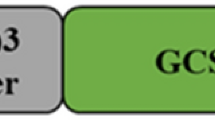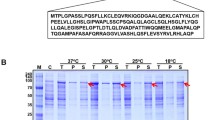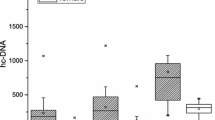Abstract
Recombinant methionyl human granulocyte colony stimulating factor (G-CSF), a molecule of 18.8 kDa, has been shown to induce a systemic response after delivery by aerosol. In this work, rate and extent of absorption as well as the response were determined after bolus administration of solutions by intratracheal instillation (IT). The protein was quantified using a specific ELISA and the biological response was assessed by monitoring the increase in numbers of circulating white blood cells (WBC). A dose–response curve was obtained after IT, subcutaneous injection (SC), and intracardiac injection (IC) of 100 µL of a nominal dose ranging from 1 to 1000 µg/kg G-CSF (n = 5). WBC numbers were determined 24 hr postadministration. Absorption and clearance kinetics were determined after IT and IC of 500 µg/kg protein over a 24-hr time period (n = 5). The response of the lung to G-CSF was monitored by WBC counts and differentials in lung lavage fluid. 73.6 ± 10.5% (n = 7) of the IT dose reached the lung lobes. The response to single doses of G-CSF by IT or SC was similar, with WBC numbers increasing over 4× baseline at the higher doses. Absorption from the lung was rapid and did not follow first-order kinetics. Clearance after the IC dose was described by a biexponential equation (α = 1.41, β = 0.24 hr−1). Peak serum levels were obtained ≈1–2 hr after IT. The bioavailability was 45.9% of the administered dose and 62.0% of the dose reaching the lung lobes. These results indicate that G-CSF is rapidly absorbed from the lung. Pulmonary delivery via the airways has promise as an alternative to parenteral injection.
Similar content being viewed by others
REFERENCES
L. S. Schanker and J. A. Hemberger. Relation between molecular weight and pulmonary absorption rate of lipid insoluble compounds in neonatal and adult rats. Biochem. Pharmacol. 32:2599–2601 (1983).
R. M. Effros and G. R. Mason. Measurements of pulmonary epithelial permeability in vivo. Am. Rev. Resp. Dis. 127:S59–S65 (1983).
A. Adjei and J. Garren. Pulmonary delivery of peptide drugs: Effect of particle size on bioavailability of leuprolide acetate in healthy male volunteers. Pharm. Res. 7:565–569 (1990).
F. M. Wigley, J. H. Londono, S. H. Wood, J. C. Shipp, and R. H. Waldman. Insulin across respiratory mucosae by aerosol delivery. Diabetes 20:552–556 (1971).
P. Colthorpe, S. J. Farr, G. Taylor, I. J. Smith, and D. Wyatt. The pharmacokinetics of pulmonary-delivered insulin: A comparison of intratracheal and aerosol administration to the rabbit. Pharm. Res. 9:764–768 (1992).
B. L. Laube, A. Georgopoulos, and G. K. Adams III. Preliminary study of the efficacy of insulin aerosol delivered by oral inhalation in diabetic patients. JAMA, 269:2106–2109 (1993).
R. B. Elliot, B. W. Edgar, C. C. Pilcher, C. Quested, and J. McMaster. Parenteral absorption of insulin from the lung in diabetic children. Aust. Paediat. J. 23:293–297 (1987).
J. S. Patton and R. M. Platz. Systemic delivery of peptides and proteins through the pulmonary route. J. Aer. Med. 6(Suppl.): 53 (1993).
J. S. Patton, J. G. McCabe, S. E. Hansen, and A. L. Daugherty. Absorption of human growth hormone from the rat lung. Biotech. Ther. 1:213–228 (1990).
J. S. Patton and R. M. Platz. (D) Routes of delivery: Case studies. (2) Pulmonary delivery of peptides and proteins for systemic action. Adv. Drug Deliv. Rev. 8:179–196 (1992).
R. C. Hubbard, M. A. Casolaro, M. Mitchell, S. E. Sellers, F. Arabia, M. A. Matthay, and R. G. Crystal. Fate of aerosolized recombinant DNA-produced α-1-antitrypsin: use of the epithelial surface of the lower respiratory tract to administer proteins of therapeutic importance. Proc. Natl. Acad. Sci. 86:680–684 (1989).
E. A. M. Dominquez, A. A. Liebow, and K. G. Bensch. Studies on the pulmonary air tissue barrier. I. Absorption of albumin by the alveolar wall. Lab. Invest. 16:905–911 (1967).
H. G. Folkesson, B. R. Westrom, and B. W. Karlsson. Permeability of the respiratory tract to different-sized macromolecules after intratracheal instillation in young and adult rats. Acta Physiol. Scand. 139:347–354 (1990).
K. Takada, M. Yamamoto, and S. Asada. Evidence for the pulmonary absorption of fluorescent labelled macromolecular compounds. J. Pharm. Dyn. 1:281–287 (1978).
G. D. Demetri and J. D. Griffin. Granulocyte colony-stimulating factor and its receptor. J. Am. Soc. Hematol. 78:2791–2808 (1991).
R. M. Platz, M. A. Winters, and C. G. Pitt. Pulmonary administration of granulocyte colony stimulating factor. International publication number WO 92/16192, October 1992.
S. Nelson, G. Bagby, J. Andresen, J. Shellito, and W. Summer. Intratracheal granulocyte colony stimulating factor enhances systemic and pulmonary host defenses. Am. Rev. Respir. Dis. 143:S398 (1991).
M. Gibaldi and D. Perrier. Pharmacokinetics, 2nd ed., Marcel Dekker, New York, 1982.
A. T. Cohen, K. M. Zsebo, H. Inoue, D. Hines, T. C. Boone, V. R. Chazin, L. Tsai, T. Ritch, and L. M. Souza. In vivo stimulation of granulopoiesis by recombinant human granulocyte colony-stimulating factor. Proc. Natl. Acad. Sci. 84:2484–2488 (1987).
J. M. Chang, D. Metcalf, T. J. Gonda, and G. R. Johnson. Long-term exposure to retrovirally expressed granulocyte-colony-stimulating factor induces a nonneoplastic granulocytic and progenitor cell hyperplasia without tissue damage in mice. J. Clin. Invest. 84:1488–1496 (1989).
G. C. Kindt, J. E. Gadek, and J. E. Weiland. Initial recruitment of neutrophils to alveolar structures in acute lung injury. J. Appl. Physiol. 70:1575–1585 (1991).
H. Tanaka, Y. Okada, M. Kawagishi, and T. Tokiwa. Pharmacokinetics and pharmacodynamics of recombinant human granulocyte-colony stimulating factor after intravenous and subcutaneous administration in the rat. J. Pharmacol. Exp. Ther. 251:1199–1203 (1989).
A. Adjei. Pulmonary bioavailability of LH-RH analogs: A case study with leuprolide and other LH-RH analogs. J. Aer. Med. 6 (Suppl):54 (1993).
D. O. DeFouw. Ultrastructural features of alveolar epithelial transport. Am. Rev. Resp. Dis. 127:S9–S13 (1983).
O. S. Atwal, L. Viel, and K. J. Minhas. An uptake of cationized ferritin by alveolar type I cells in airway-instilled goat lung: Distribution of anionic sites on the epithelial surface. J. Submicrosc. Cytol. Pathol. 22:425–432 (1990).
S. Nelson, W. Summer, G. Bagby, C. Nakamura, L. Stewart, G. Lipscomb, and J. Andresen. Granulocyte colony-stimulating factor enhances pulmonary host defenses in normal and ethanol-treated rats. J. Infect. Dis. 164:901–906 (1991).
G. C. Kindt, J. E. Gadek, and J. E. Weiland. Initial recruitment of neutrophils to alveolar structures in acute lung injury. J. Appl. Physiol. 70:1575–1585 (1991).
H. Y. Reynolds. Lung inflammation: Role of endogenous chemotactic factors in attracting polymorphonuclear granulocytes. Am. Rev. Resp. Dis. 127:S16–S25 (1983).
Author information
Authors and Affiliations
Rights and permissions
About this article
Cite this article
Niven, R.W., Lott, F.D. & Cribbs, J.M. Pulmonary Absorption of Recombinant Methionyl Human Granulocyte Colony Stimulating Factor (r-huG-CSF) After Intratracheal Instillation to the Hamster. Pharm Res 10, 1604–1610 (1993). https://doi.org/10.1023/A:1018920619424
Issue Date:
DOI: https://doi.org/10.1023/A:1018920619424




